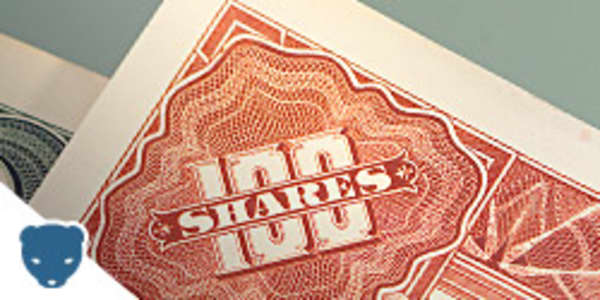History-Making Events in the Currency Markets
Concerns about the soundness of the European Union and its single currency have been roiling financial markets of all kinds on and off for more than a year. Currency crises can do that, especially given the enormous size of the foreign exchange market, the possibility of rapid, dramatic swings in direction and the power and momentum of trading.
And as the market saying goes: There’s nothing like an international crisis to lift the dollar. That’s certainly been the case recently, with the U.S. gaining more than 5 percent against a basket of currencies in May alone, while stocks around the world have wilted.
The currency market has been home to some dramatic and dynamic events of the past three decades, most of which shook the financial markets and affected the global economy for weeks, even months, on end.
Many of them took place well before currency ETFs became available, but there are plenty of funds with which to play the global economy.
Here’s a look at 10 events in the market.
By CNBC.com
Posted 12 June 2012
The Plaza Accord-Dollar Devaluation
Year: 1985
Named after the New York hotel where the pact was struck by the United States, France, West Germany, Japan and United Kingdom, the goal was to devalue the U.S. dollar by massive and coordinated central bank intervention in the currency markets, whereby dollars were sold below market rates to depreciate it against the currencies of the other countries.
The accord was the result of the five-year period before 1985, which included an economic malaise, when the dollar surged against the currencies of major U.S. trading partners. The result killed the competitiveness of U.S. industry, crimping exports of tech, auto, and machine products, and sparked calls in Congress for protectionist legislation to slow imports.
George Soros and the British Pound
Year: 1992
The 1990s, though generally a very prosperous decade for the world economy, were rife with currency market tumult in just about every corner of the world.
During the early phase of Europe’s single currency, the euro, the E.U. had a currency control known as the exchange rate mechanism, meant to keep the major currencies there in a range of relative value with each other. At the time, the U.K. was considering joining the monetary union — though reluctantly. With an economy on the verge of a downturn, the U.K. struggled to keep the British pound within the appropriate range of the German mark, whose value has been inflated by very high interest rates connected to the borrowing costs of German unification.
Investor George Soros, then an active currency trader, and others in the market, undertook massive and relentless short-selling of the British pound, devaluing it to the point that its inclusion in the trading band was threatened. The British government fought back by raising interest rates and intervening in the markets. In the end, the traders prevailed and Britain quit the European Exchange Rate Mechanism. For his part, Soros reportedly made a billion dollars.
The Mexican Peso Collapse
Year: 1994-1995
Sudden devaluations of currencies are problematic for governments, and the peso collapse came amid a weak economy, very low oil prices, and a hangover from years of borrowing. The trigger, however, was Mexico’s decision to reverse the tight currency controls that had essentially made the peso a fixed currency.
The move coincided with the rollover of Mexico’s government debt and an armed rebellion in a southern state and led to the resignation of a finance minister (Jaime Serra Puchera at left). Spooked investors sold Mexican bonds, the central bank tried to defend the sinking peso, largely depleting its reserves. The government set a new — and much lower — fixed rate to the dollar but failed to assuage investors. The peso was allowed to trade freely, promoting a massive decline. The U.S. bought pesos to stabilize the situation and collaborated with the International Monetary Fund on a rescue package.
Dollar’s Record Low Vs. Yen
Year: 1995
Alarm bells were ringing in the spring of 1995 as the dollar sank against the major currencies. Its performance against the yen was of particular importance because Japan’s economy was the envy of its trading partners, looking downright invincible. The period ushered in the term “twin deficits,” short for the massive trade and budget deficits America was running up, which was flooding the world economy with ever-less valuable dollars. The dollar sank to just below 80 yen. To some, it signaled the end of the dollar’s role as a reserve currency. Looked at another way, it was the beginning of a six-year dollar rally into the new millennium. Ten years later, of course, the dollar hit a new record low against the yen.
Thai Baht Collapse-Asian Contagion
Year: 1997
Currency devaluations and bailout packages would soon become the norm. A chain reaction started in Thailand, whose property-boom-inflated economy and overwhelming level of foreign debt forced the float of another fixed-rate currency, which the central bank couldn’t afford to defend in the markets, and the baht became almost worthless. Nervous investors bailed out of Thai assets and then set their sights on other countries in the region, whose currencies also had been weakening. The fortunes of South Korea, Indonesia, Malaysia, the Philippines and others fell like dominoes, casing financial havoc abroad. The South Korean stock market essentially crashed one day in the fall of 1997, spooking U.S. investors so much that declines on the New York Stock Exchange triggered trading-circuit breakers that required an early market close. Many of the Asian countries received bailout packages from the IMF that well exceeded Mexico’s.
Russian Default-Ruble Crisis
Year: 1998
The ruble survived contagion from Asia in 1997, but Moscow’s mismanagement whipsawed world markets in 1998.Government instability in early years of the post-Soviet breakup years and a shaky economic foundation set the stage for a chain reaction. Currency market speculators attacked the ruble, the central bank fought back with market intervention and higher interest rates. Delays in obtaining an IMF package worsened the situation. Investors ran, and the government capitulated by default on its sovereign debt, devaluing — and floating — the ruble, and suspending payments by commercial banks to foreign creditors.
Argentina Economic Crisis
Year: 1998-2002
This fiscal fiasco was long in the making, but a key ingredient years before the crisis began was the Argentine peso’s peg to the U.S. dollar. In particular, an extremely favorable exchange rate (1 to 1) led to massive imports, which weakened the Argentine economy. Meanwhile, high government debt, both past and present, piled up, but the IMF kept lending new money to Argentina and postponing payments on the old money.
Finally, with the economy shrinking, and the IMF press for action, the Argentine government imposed a series of austerity programs, which undermined the economy even more and required more borrowing to make up for lost tax revenue. Reform and retrenchment didn’t sit well with the populace, which reacted with civil unrest and bank runs.
Moves by Standard & Poor’s addressing Argentina’s deteriorating credit worthiness led to a spike in borrowing costs and a change in government. Soon after, the IMF finally withheld aid money.
In late 2001, with riots common and the streets of Buenos Aires ablaze, Argentina defaulted on its massive public debt. Shortly after in 2002, the 1-to-1, fixed exchange rate was lowered. When the government later allowed the peso to float, it depreciated quickly.
Euro-Dollar Parity & Then Some
Year: 2000
As Argentina unraveled, another exchange-rate parity story was unfolding across the Atlantic. Europe’s single currency hit the markets in 2000 with a launch rate equal to about $1.16. After an initial rise, the euro began a long and deep descent for most of the year, worth about 84 cents at its worse, as capital rushed to the booming U.S. economy and its attractive assets.
The major central banks worked together, buying the euro in the markets to increase its value but little was accomplished. King dollar was back and the new kid on the block was temporarily put in its place. Eight years later, the table would be turned and the euro would be worth more than a dollar and a half.
Zimbabwe Dollar: Inflation Nation
Year: 1999-2009
Sometimes the crisis is so bad, the currency itself has to go but the markets mostly shrug. Like Zimbabwe, where the government essentially abandoned the Zimbabwe dollar after two decades of hyper-inflation had rendered it worthless.
In a period of four years, Zimbabwe’s central bank issued new currency denominations three times. At one point, there was a trillion-dollar note. The country now uses a number of foreign currencies, including the euro, pound and U.S. dollar, as legal tender.
Australian Dollar-U.S. Dollar Parity
Year: 2010
Now and then, a currency market event is as much a symbol as it is a catalyst. Such was the case in October 2010 when the “outback” reached parity with the greenback; it was the first time the Aussie dollar traded at that level since it was allowed to float in 1983. The strength of the Australian currency is mirrored by that of other countries with large amounts of natural resources fit for export.




